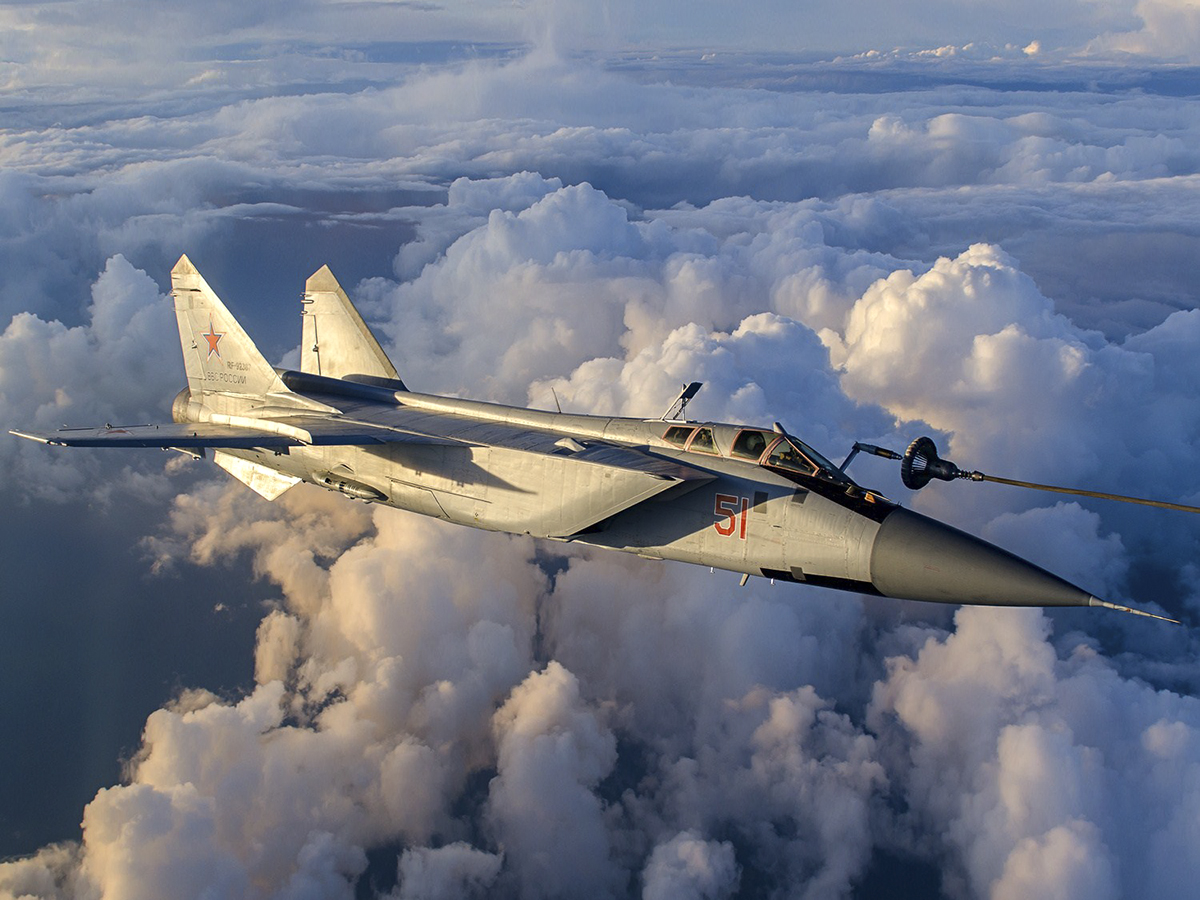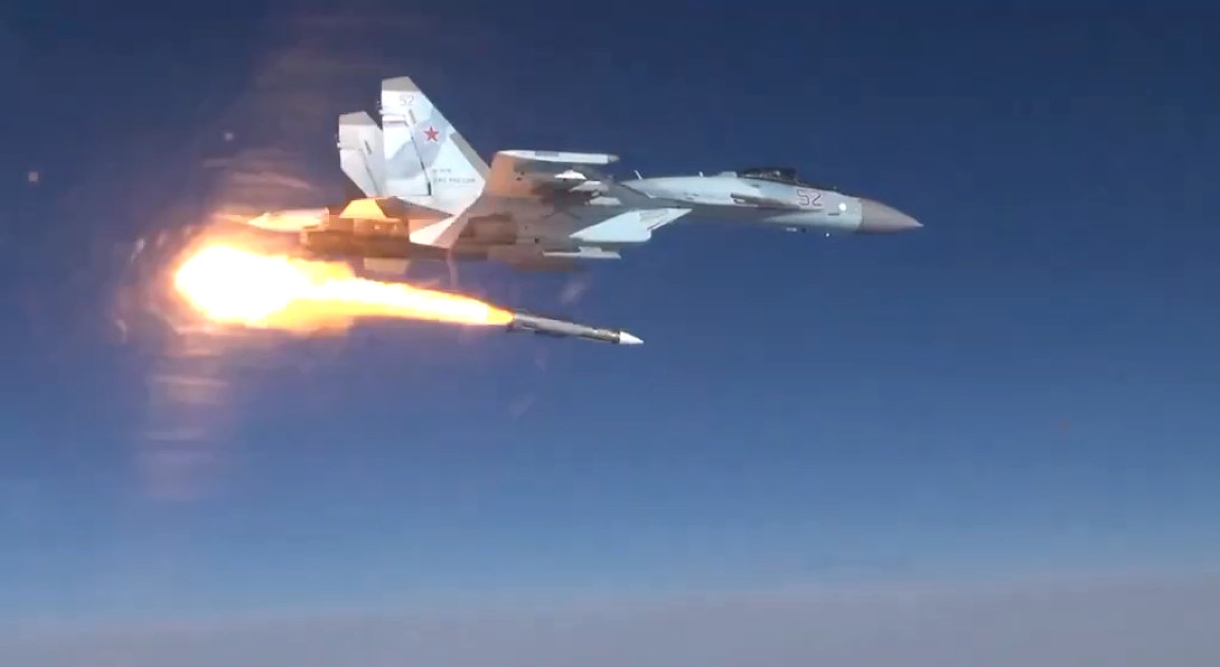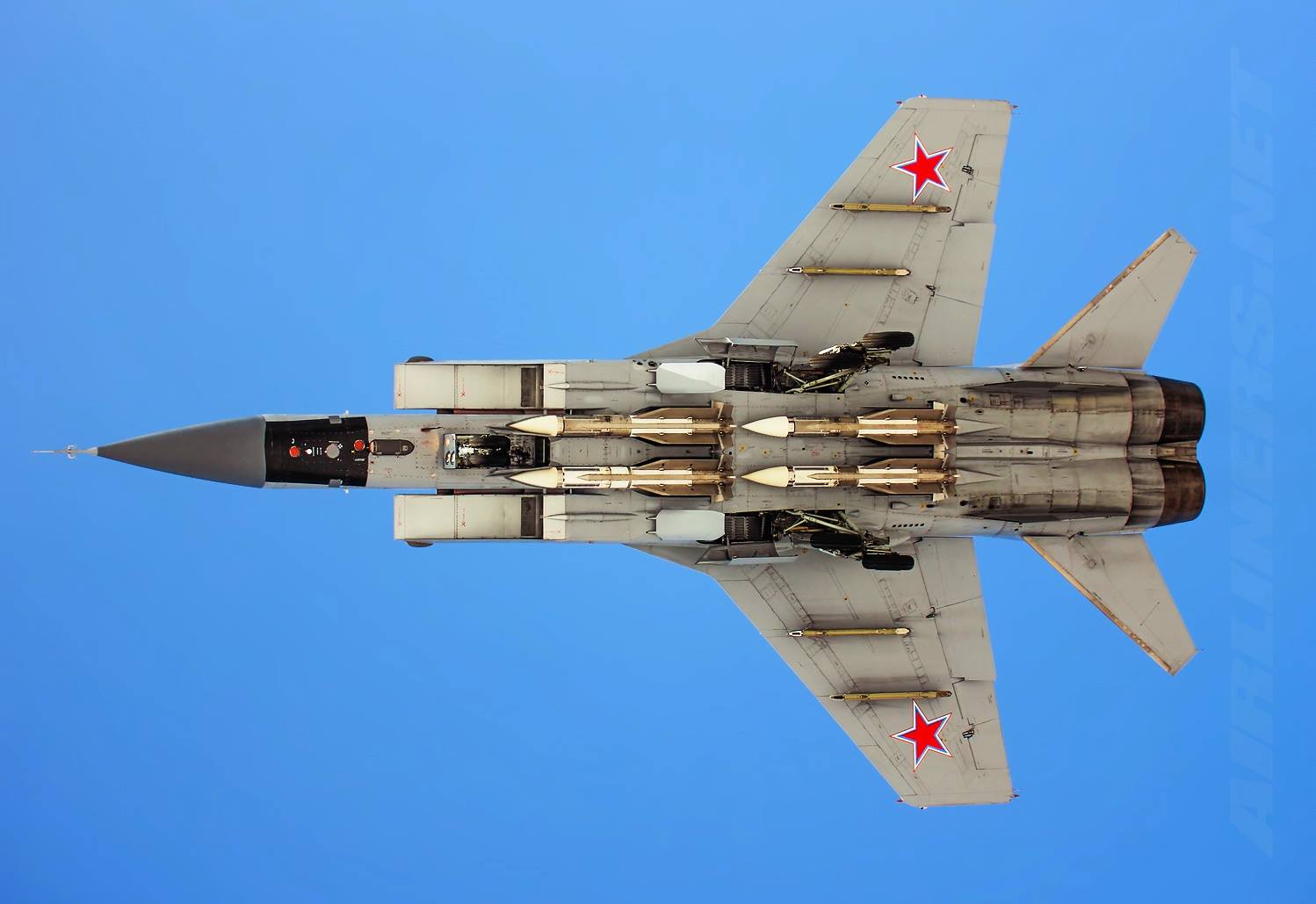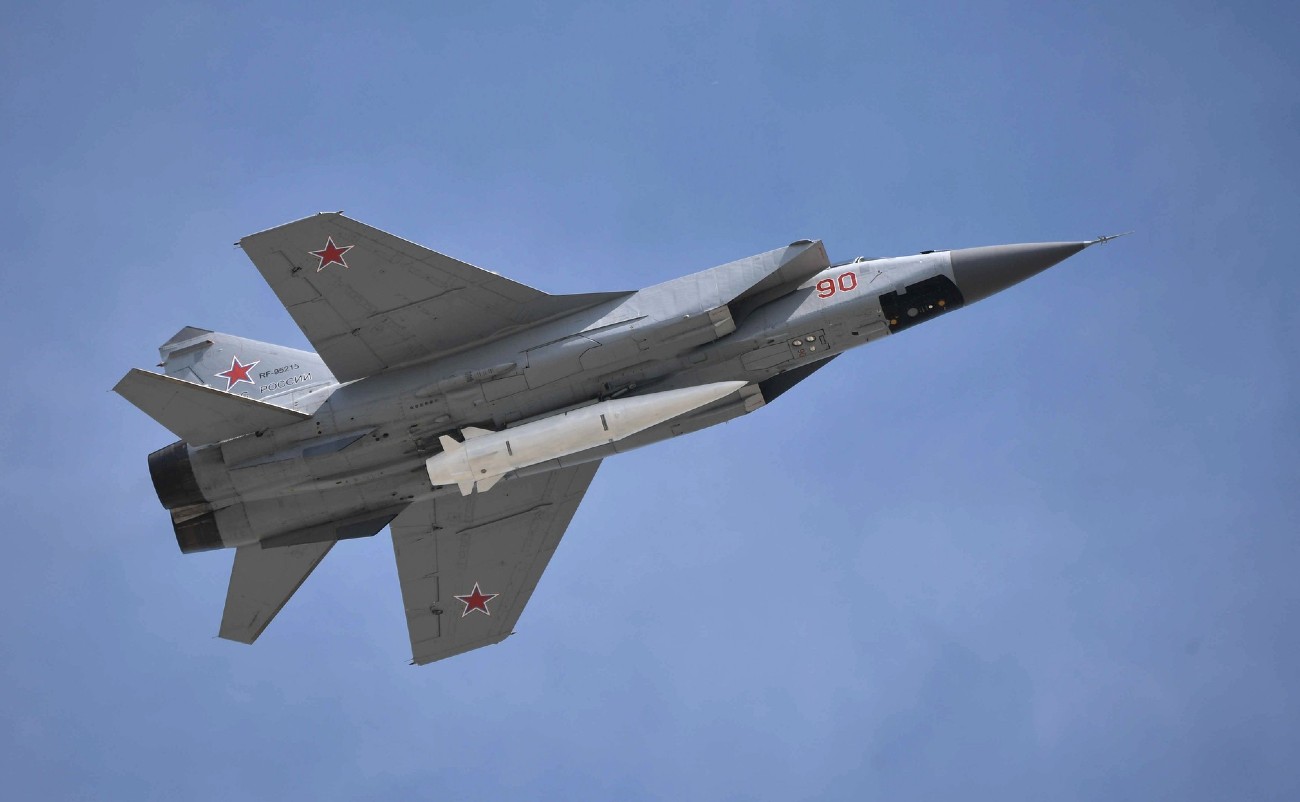The combat air arm of Russia’s Central Military District (TsVO), stationed in the Krasnoyarsk Territory, recently received two upgraded MiG-31BM fighter interceptors, according to the press release issued by the Russian Ministry of Defense (MoD) on December 9.
The MiG-31BM is among the several variants of the original soviet-era MiG-31(NATO designation: ‘Foxhound’) supersonic, all-weather interceptor fighter. It is a multi-purpose long-range fighter aircraft with high speed and the ability to strike both airborne and ground targets.
It features upgraded avionics, hands-on-throttle-and-stick (HOTAS) controls, liquid-crystal color multifunction displays (MFDs), a robust onboard computer system, digital data linkages, and phased array radar.
The MiG-31BM is said to be the most efficient version of the original MiG-31. According to Russian media reports, it is one of the few Russian aircraft that can intercept and destroy cruise missiles flying at extremely low altitudes.

It can be armed with various Russian air-to-air and air-to-surface missiles. Notably, it is capable of intercepting 24 targets simultaneously.
As per an estimate, the Russian Aerospace Forces (VKS) have around 252 MiG-31s in their inventory. Moscow began upgrading these Foxhounds to the MiG-31BM and BSM variant in 2010 with plans to have 100 upgraded by 2020.
Currently, Russia has three regiments of the MiG-31BM, comprising around 90 operational examples of the fighter type.
Russia’s Most Successful Fighter In Ukraine
The MiG-31BM is considered one of the most potent variants of the MiG-31 interceptor aircraft. It has proven its mettle by outperforming every other fighter deployed in the ongoing Russia-Ukraine war.
EurAsian Times has discussed, in extensive detail before, how the advanced fighters of the Russian Aerospace Forces (VKS), like the Su-30SM and Su-35S, have remained very effective and lethal against Ukrainian aircraft throughout the war.

Ukrainian fighter pilots and military experts have admitted that Russia’s Su-30SM and Su-35S completely outclass Ukrainian Air Force fighters.
However, from the start, the war was not as much about air superiority for Ukraine as it was about denying airspace to Russian combat aviation assets using an array of air defense systems.
Ukraine fielded medium and long-range air defenses, like the S-300s and Buk-M1s, which forced the Russian fighter jets to fly at altitudes below 4500 meters, right into the range of the man-portable air defense systems (MANPADS) that have accounted for a significant number of shoot-downs of Russian aircraft.
“Most of our Su-35s, Su-24s, and Su-34s have been hit while flying at low altitudes,” a retired Russian pilot previously told EurAsian Times, who requested anonymity.
Video of RUS Su-34 that was shot down by the APU with an 9K38 Igla (Sa-18 Grouse) MANPADS.#UkraineRussiaWar #OSINT#Fellas #NAFO pic.twitter.com/Wug8HjwE85
— OSINT (Uri) (@UKikaski) September 24, 2022
Overall, Russia is known to have lost at least one Su-35S and eleven Su-30SMs, of which six were destroyed or damaged in the air, leading some war observers to question the efficacy of these Russian-made aircraft.
However, if there is one aircraft whose efficacy has remained undisputed since the onset of conflict in Ukraine, it is the MiG-31BM armed with the long-range R-37M air-to-air missile.
This combination has had a stellar track record in the ongoing war, with no documented loss of a MiG-31BM during combat.
According to a recent study on the Russian Air War in Ukraine, conducted by the London-based Royal United Services Institute (RUSI), the VKS’ defensive patrols have proven highly effective against Ukrainian combat aircraft, with the MiG-31BM and R-37M long-range air-to-air missile being particularly problematic for the Ukrainian fighter pilots.
The RUSI report states that the Su-27, the best interceptor the Ukrainian Air Force has, cannot match the MiG-31’s altitude, speed, or range. The fighter can dash at Mach 2.5 for brief periods and fly at an altitude of around 18 kilometers for a distance of over 700 kilometers.
Also, the R-37M missile can be fired at targets up to a distance of more than 300 kilometers, with the missile performing best at ranges of around 128 kilometers. In contrast, the R-27 missile used by the Ukrainian Su-27s can only be launched 50 kilometers away.

Experts at RUSI wrote in the report that “the extremely high speed of the weapon (R-37M), coupled with very long effective range and a seeker designed for engaging low-altitude targets, makes it particularly difficult to evade.”
This means that the Foxhounds have a clear edge over Ukrainian fighter jets, allowing them to shoot at any airborne target and escape unharmed.
The MiG-31K & Hypersonic Dagger
Russia has also used a variant of the MiG-31 armed with the hypersonic Kh-47 Kinzhal (called ‘Dagger’ in Russian) missiles to strike targets early in its invasion of Ukraine. It is called the MiG-31K.
Initially, it was the MiG-31BM that was intended to carry Kinzhal hypersonic missile, but MiG-31K was later selected as the carrier, according to Russian Defense Minister Sergei Shoigu.
The Kh-47 Kinzhal missile is said to have a range of 2000 kilometers. It can carry either a fragmentation warhead weighing approximately 499 kilograms or a 500-kiloton nuclear warhead, which is 33 times more powerful than the atomic bomb that was used to strike Hiroshima.

The missile can travel at 5-12 times the speed of sound and follows a flatter trajectory than a standard ballistic missile, leaving the air defenses with a short time to react. Also, the missile is difficult to intercept because of its ability to maneuver at all stages of its flight path.
The missile can hit not only stationary targets with precision but also mobile targets with the help of a radar seeker.
The Kh-47M2 Kinzhal made headlines this year after Russia announced on March 19 that it had destroyed a weapons storage depot in the village of Deliatyn in the Ivano-Frankivsk region in western Ukraine using its Kinzhal hypersonic missiles, marking the first-ever use of a hypersonic weapon in combat.
US President Joe Biden, speaking about the missile at a conference with business leaders, said, “it’s almost impossible to stop it.”
The Kinzhal missile has to be employed using a high-altitude aircraft that can fly at high speeds. Therefore, the MiG-31, a Mach 3-capable air defense interceptor, is perfectly suitable to carry the missile.
Russia has also been increasingly deploying MiG-31Ks in the Kaliningrad Region as part of additional strategic deterrence measures against the West.
From Kaliningrad, a MiG-31 armed with a Kinzhal missile can strike most West European capitals like London, Paris, Rome, and many more, in a matter of 7-10 minutes, according to a previous EurAsian Times report.
That said, only 10 to 20 MiG-31s are known to have been upgraded to fire Kinzhals so far.
- Contact the author at tanmaykadam700@gmail.com
- Follow EurAsian Times on Google News




